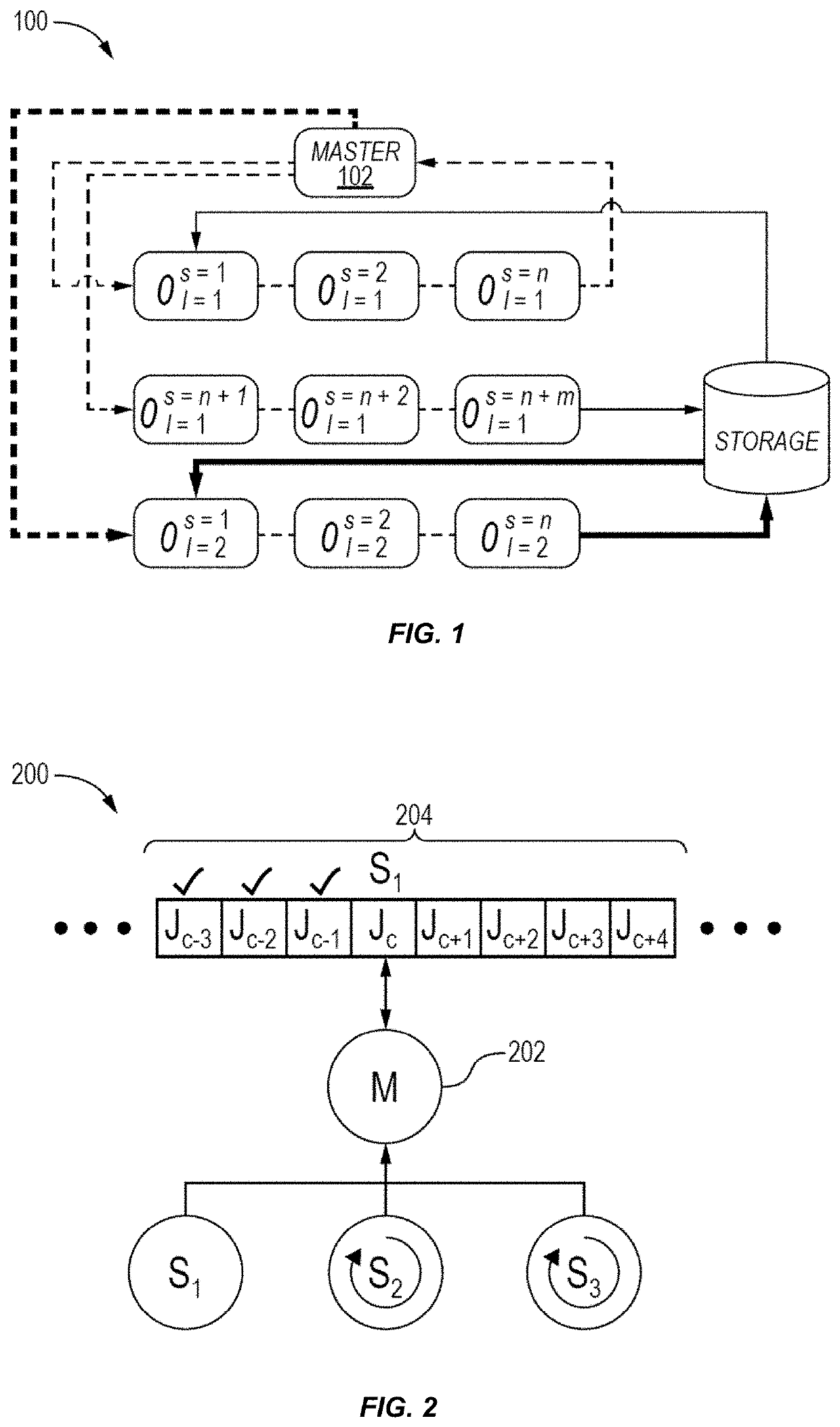Systems and methods for content-based indexing of videos at web-scale
a content-based indexing and video technology, applied in the field of content-based indexing of videos at webscale, can solve the problems of large-scale multi-media indexing that generally requires significant data processing and substantial computational resources, and can come at a steep monetary cost, and high costs for provider network based multi-media processing
- Summary
- Abstract
- Description
- Claims
- Application Information
AI Technical Summary
Benefits of technology
Problems solved by technology
Method used
Image
Examples
example 1
r-implemented method comprising:
[0080]receiving a video file;[0081]splitting the video file into video frames and audio;[0082]determining frequency spectrum features for the audio;[0083]clustering each of a plurality of subsets of the frequency spectrum features into a respective audio centroid for a shared set of bases;[0084]determining a first adjacency matrix of distances between the respective audio centroids; determining visual features for each frame of the video frames;[0085]clustering each of a plurality of subsets of the visual features into a respective video centroid; and determining a second adjacency matrix of distances between the respective video centroids.
example 2
ter-implemented method of example 1, further comprising converting the visual features into a compact binary feature representation, wherein the clustering of each of the plurality of subsets of the visual features comprises clustering each of a plurality of subsets of the compact binary feature representation of the visual features into the respective video centroid.
example 3
ter-implemented method of example 1, wherein the clustering of each of the plurality of subsets of the frequency spectrum features into the respective audio centroid for the shared set of bases comprises clustering based on a magnitude of the frequency spectrum features.
Example 4. A computer-implemented method comprising:[0086]receiving a video file;[0087]splitting the video file into video frames and audio;[0088]determining audial features for the audio;[0089]clustering each of a plurality of subsets of the audial features into a respective audio centroid for a shared set of bases;[0090]determining a first adjacency matrix of distances between the respective audio centroids (e.g., the distances between a first video centroid and a second video centroid and a third video centroid);[0091]determining visual features for the video frames;[0092]clustering each of a plurality of subsets of the visual features into a respective video centroid; and[0093]determining a second adjacency matri...
PUM
 Login to View More
Login to View More Abstract
Description
Claims
Application Information
 Login to View More
Login to View More - R&D
- Intellectual Property
- Life Sciences
- Materials
- Tech Scout
- Unparalleled Data Quality
- Higher Quality Content
- 60% Fewer Hallucinations
Browse by: Latest US Patents, China's latest patents, Technical Efficacy Thesaurus, Application Domain, Technology Topic, Popular Technical Reports.
© 2025 PatSnap. All rights reserved.Legal|Privacy policy|Modern Slavery Act Transparency Statement|Sitemap|About US| Contact US: help@patsnap.com



